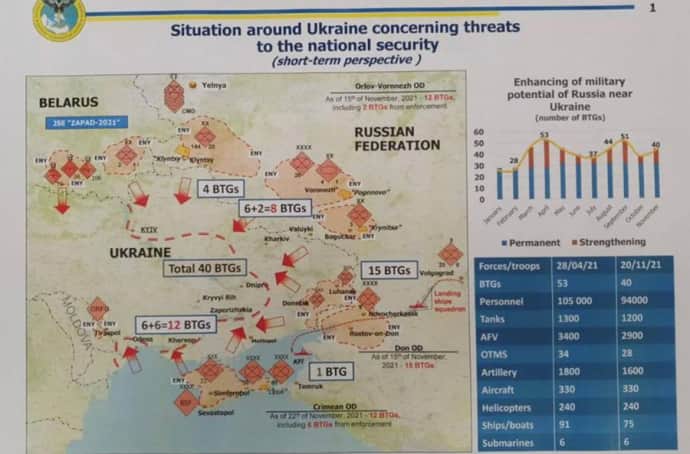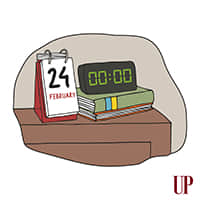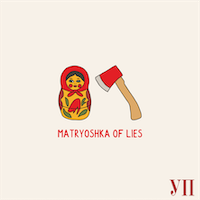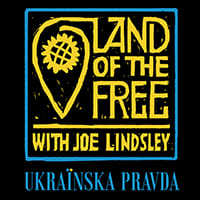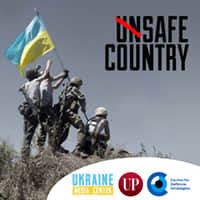24.02: The Invasion Reconstructed. Episode 1 – Preparing for the Russian invasion
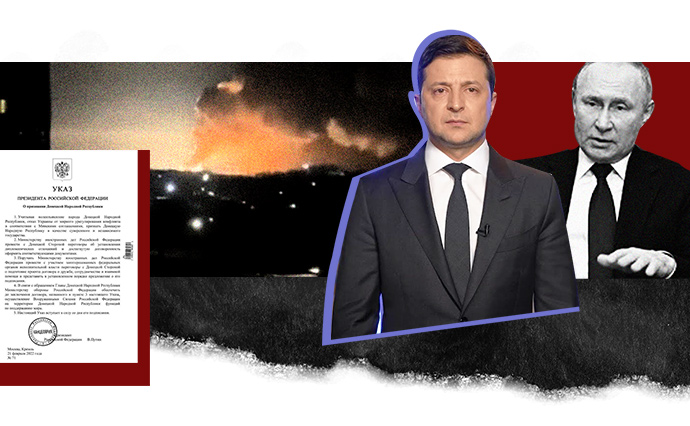
23 February 2022 felt interminable.
All sorts of intelligence agencies had spent the previous few weeks trying to give President Volodymyr Zelenskyy the date when the great Russian invasion would "definitely" begin.
These dates rolled by – 16, 19, 22 February – without anything happening. The night of 23-24 February was said to be the next possible date for the invasion’s start.
But would it materialise? And if it would, what would it look like? What forces would be deployed? Would the Russians advance openly or continue the stealth attacks under the flags of puppet regimes [in occupied regions in eastern Ukraine] of the past eight years?
Questions proliferated, and people expected their president to have the answers.
Zelenskyy and his team chose to conceal the military preparations and do their best to calm the public. The meeting with Ukraine’s oligarchs and top business owners that took place on Bankova Street [the street in Kyiv where the Office of the President is located - ed.] on the evening of 23 February was a major part of this campaign to reassure the public. The meeting set out to address the question of whether or not the "great war" would indeed happen.
The calm demeanour and smiles on the faces of the business people leaving the Office of the President in their expensive cars to go home – instead of heading straight to the airport to leave the country – seemed to suggest that Zelenskyy had managed to convince them that the invasion wasn’t imminent, or at least that it wasn’t about to begin that night.
But Zelenskyy himself didn’t seem calm at all when he met with his speech writers later that night – around 21:00 – to outline his next public address.
Those in the room with him that night say that the president was focused "like someone driving a car at night".
That speech was different from many that came before it. In light of the expected invasion of Putin’s forces, Zelenskyy chose to appeal to the Russian people.
Zelenskyy turned out to be more sincere in this address to the people of the aggressor country than he had been during his countless speeches and meetings during the days leading up to it. Perhaps that came as a surprise even to himself.
"I appeal to Russian citizens as a citizen of Ukraine," he began.
"We share over 2,000 kilometres of the border. Your forces have gathered by this border: almost 200,000 military personnel, thousands of combat vehicles.
Your government has approved their next step: advancing into the territory of another country. This step could mark the beginning of a great war on the European continent…
We don’t need war: neither a cold war, nor a ‘hot’ one, nor a hybrid one. But if we have forces advancing on [our country], if they try to take away our country, our freedom, our lives, and the lives of our children – we will defend ourselves! We won’t be on the offensive; but we will defend ourselves. When you carry out your offensive, we will be there to meet you; you won’t see us turn our backs [and flee] – you will see our faces," Zelenskyy said in his address.
The address was shared on Zelenskyy’s social media around midnight, as the president and the key members of his team left for their homes.
A thousand-faced monster was already quietly and ominously stirring near the 2,000-kilometre stretch of the border between Ukraine and Russia.
A Russian soldier later captured by Ukrainian forces described the moment before the invasion as follows:
"On the evening of 23 February the unit commander lined us up and said: ‘You’ll be able to go back home in four days. The Ukrainians won’t fight for their oligarchs’. As everyone said, we wanted to capture Kyiv in three days. We are on the brink of World War III."
This article is based on the first episode of the 24 February 2022 Reconstructed podcast produced by Ukrainska Pravda.
"Something’s about to start": A sense of an impending attack
"I remember I didn’t get home until very late. We had lots of meetings, I think we had a meeting of the National Security and Defence Council. We were all talking about all that. We set out the relevant documents and agreed on plans of action. We knew that the entire state should come together as one if the [invasion] began. Everyone ought to be in their place. We worked on a few things with the National Bank, including things to do with the national reserve, to ensure we had a financial backbone. Let’s say everything was in good order," Zelenskyy recalls getting home on the last day of peace in 2022.
Ukraine’s defence intelligence anticipated that the Russian invasion might begin on the morning of 24 February. Though Zelenskyy had spent all of the previous day trying to convince the country that the situation was under control, that evening was the first time he felt a sense of grave threat. Enemy forces were preparing for an attack and could no longer conceal those preparations.
"I left the Office [of the President] at 01:30 in the morning. The president also left around 01:00. We were in meetings until around then.
I remember getting a call from Reznikov [Oleksii Reznikov, then Ukraine’s Defence Minister – ed.] around two or three in the morning, just as I got home. He told me he got a call from the Belarusian defence minister who told him he thought Reznikov ‘should urgently contact his Russian counterpart’. Reznikov told him he maintained no communication with [the Russian defence minister] and asked what was going on and why he should call him. ‘I can’t tell you’ [the Belarusian defence minister replied]. Then it was clear something was afoot."
Something was, indeed, afoot. But no one knew what exactly would happen. Most military and political top brass agreed that a large escalation was probably being planned in Donbas – that was where the majority of Ukrainian forces were deployed.
Heated arguments broke out when someone suggested Russia might advance on other fronts.
Was it possible that Russia might launch an offensive from Belarusian territory? Might Belarus take part in the offensive? Would Russia launch an attack from Crimea? Would it continue hiding behind the backs of its henchmen?
Putin and his "window of possibilities"
This war turned out to be truly large-scale. Russia waged it in the open. Many analysts believe that Putin saw a window of possibility for himself and for Russia – the only opportunity to capture Ukraine.
This window of opportunity was determined by the world being distracted by the aftermath of the Covid pandemic, the US weakness in Afghanistan, and German Chancellor Angela Merkel – Europe’s de facto leader – leaving her post. With half of Europe depending on Russian gas and oil, Moscow accumulated several hundred billion dollars of reserves that would help it weather Western sanctions.
Putin also believed his army to be the world’s second-greatest army, especially after its success in Crimea, in Donbas, and in Syria.
Valerii Zaluzhnyi, Commander-in-Chief of the Ukrainian Armed Forces, said in an interview that Russia had been accumulating resources for a long time ahead of the full-scale invasion: "According to my estimates, they were vigorously building up the number of troops, equipment, and ammunition. I think they had a three-month reserve to achieve their goals."
Putin and Russia couldn’t pursue a long-term escalation which involved gathering a lot of military personnel and equipment near the Ukrainian border forever. For the Kremlin, the choice was between pulling its forces back to Khabarovsk, Ussuriysk, and other Russian cities, or "going all the way".
There was another option – contained escalation; it seemed like the most plausible one. Ukraine’s Defence Intelligence Chief Kyrylo Budanov thinks this scenario could’ve been much worse for Ukraine.
"It’s simple. [Putin] would escalate in Donetsk and Luhansk regions. Negotiations would begin. During the negotiations he would escalate some more, carrying out several high-precision attacks on certain Ukrainian facilities and plunging the country into chaos. Following that, he could force [Ukraine] to agree to the conditions he wanted. That was quite logical.
Everyone told him that was a good option for [Russia]. The not-so-good option was to launch a direct attack. He chose direct aggression," Budanov said.
The Times reported that Russia approved an in-principle decision about the war in Ukraine as early as late summer 2021.
According to The Times, only a limited number of people knew about Putin’s plans: "Four men – three of whom were former or current directors of the Federal Security Service (FSB) – were to play a central role in leading Russia to war: Putin himself; Nikolai Patrushev, chairman of the Security Council and Putin’s KGB colleague since 1975; Putin’s old St Petersburg University classmate and FSB head Aleksandr Bortnikov; and Defence Minister Sergei Shoigu. Of the latter three, it was Patrushev and Bortnikov who were the prime political movers, Shoigu the sometimes hesitant executor."
Neither the members of the Russian State Duma, nor Russian ministers, heads of state corporations or Putin’s oligarch friends could say if there would really be a full-scale war, or if it was all a bluff.
War or bluff?
By mid-February, Russia prepared everything it needed to start a full-scale war.
Ruslan Leviev, the founder of the Conflict Intelligence Team, a military analysis and investigative organisation that has been tracking the movements of the Russian army since November 2021, said in an interview in February 2022 that his organisation got progressively more certain that Russia was preparing for a full-scale war:
"We had followed a number of red flags since November 2021. Say, troops – but not assault forces – would be deployed to the Pogonovo training centre near Voronezh, transferred to the Yelnya training ground in Smolensk Oblast, or deployed near Kursk. Infantry wouldn’t be deployed in combat first; assault troops always go first – but they weren’t there. Then the assault troops arrived."
When Russia had assault troops lined up and ready to go, it seemed it didn’t have air defence forces. After some time, air defence forces materialised. For a while there were no field hospitals, and after some time, they appeared, too. And so on and so forth: command posts, sapper units, tankers, fuel trucks, and train cars carrying ammunition and shells.
Then the last piece of the puzzle, according to Leviev, was put into place six days before the Russian invasion:
"The last thing was putting in place potential occupation forces – forces that would take on the function of military police, the Russian Guard forces. We didn’t even see this as strictly necessary, but even this was done. This wasn’t just a formality, a huge number of these troops were gathered.
On 23 February, Roman Dudin, Head of the Security Service of Ukraine office in Kharkiv Oblast, said Russia had procured 45,000 body bags for transporting the bodies of dead soldiers.
By that point, the line between "bluff" and reality had almost completely eroded.
Warning and preparing Ukraine
The US security and defence forces had been discussing the possibility of a Russian invasion of Ukraine since autumn 2021. This narrative dismayed and confused Ukrainian officials – all but one.
Military Times published an extensive interview with Ukraine’s Defence Intelligence chief Kyrylo Budanov in November 2021. In it, Budanov openly said that Russia was preparing for an invasion of Ukraine in late January-early February 2022.
Military Times even shared a map made by Ukraine’s Defence Intelligence, with arrows marking possible directions of attack. According to the map, Russian forces would advance on Kyiv and Lviv from Belarus in the north, would head to Kharkiv and Donbas from the east, and would set out from Crimea and attempt to capture Odesa and Mariupol.
This news did not cause a great stir in Ukraine. The Russian president’s spokesman Dmitry Peskov called the information Ukrainian and Western special services shared about Russia’s preparations to invade Ukraine "hysteria".
In December 2021, the German tabloid Bild shared another map, which contained similar directions of attack and plans to seize Ukraine. At that time, many people made fun of the map; they said that Bild was not a serious outlet, but an ordinary tabloid. Lviv was marked there as Lemberg, a name that has long since ceased to exist. Military experts said that such plans were too complicated and more reminiscent of large-scale operations during World War II, and if Russia had enough strength, then it would just start a new operation in Donbas.
Most of the military personnel and experts were really preparing for that option. Like, for example, the head of the State Border Service, Major General Serhii Deineko: "Right up till the last moment, I did not believe that there could be an invasion from Crimea.
We know Putin and his weakness for using ‘false flags’, ‘miners’, and so on. [The reference to ‘miners’ is a reference to the mining community of Donbas, which Russia has often sought to manipulate for the purposes of its propaganda, to claim that there is support for Russia in Donbas – ed.] We clearly understood that the invasion would come from Belarus, from the Chornobyl direction. We also clearly understood what would happen on the border of Kharkiv and Luhansk Oblasts, where the enemy would enter the territory of Ukraine to surround and eliminate our group in the Joint Forces Operation area.
[Joint Forces Operation (JFO), is a term that came to replace the Anti-Terrorist Operation (ATO) in 2018, which was a term the government of Ukraine and the Organization for Security and Co-operation in Europe used to identify combat actions in parts of Donetsk and Luhansk oblasts against Russian military forces and pro-Russian separatists – ed.]
From Donbas along the contact line, it was absolutely clear. From the territory of Belarus, they could attack not as a Russian army, but wearing the chevrons of Belarus, in Belarusian uniforms. And as for the attack from Crimea, there are only Russians there, no one else."
Defence Intelligence chief Kyrylo Budanov told Ukrainska Pravda in an interview he was convinced that the option of direct open aggression was chosen by Putin personally:
"Putin made the final decision to start hostilities around 15:00 on the 23rd. There were still some hesitations and preparations going on until noon on the 23rd. He could have used any option before that date.
He made the decision himself, I want to emphasise that. No one had any influence on this decision.
Moreover, on the day the war began, he personally contacted the commanders of all groups, heard a formal report on readiness for the start [of the invasion], and formally issued the order to start the military aggression."
"But no one really knew what was happening," Zelenskyy insisted in an interview: "That’s just not true. No matter what our intelligence told us, no one knew the details. We were all preparing for different events. We made preparations. Different intelligence agencies, different states, our partners, made their own preparations. And [issued] their own warnings. And no one had more information than we did... There was nothing other than what they had told us."
The Armed Forces of Ukraine in early 2022 were very different from the Ukrainian army in 2014.
However, compared to the enormous Russian army, Ukraine still had rather limited resources. The difference in the number of missiles, aircraft and heavy military equipment was particularly striking.
Given its dominance in the sky and the fact that its forces outnumbered Ukrainian forces on the ground by several times, Russia wanted to secure a sudden, unequivocal and quick victory.
Only the Ukrainian command really knew about the Russian forces in detail, and if not everything, then definitely enough to knock out the enemy's main trump card of any blitzkrieg – the element of surprise.
While the country’s political leadership hesitated, its military commanders not only saw the war approach, but, as the saying goes, felt it in their gut.
Perhaps this feeling was most accurately described in an interview with Time by Valerii Zaluzhnyi, the Commander-in-Chief of the Armed Forces of Ukraine:
"There’s no mistaking the smell of war, and it was already in the air."
That is why, as Reporters found out, even a month before the invasion, Zaluzhnyi gathered the closest circle of commanders and said: "Not all of us believe that the Russians will attack, but I do. Evil cannot be negotiated with, so get ready to fight."
Serhii Deineko, Head of the State Border Guard Service of Ukraine, stresses that their intelligence also obtained information that the invasion would indeed take place:
"Yes, Western intelligence warned us. And we were very attentive to this information. We have our own border intelligence, which works very effectively in neighbouring countries, primarily Russia and Belarus," Deineko says.
"The Border Guard Service informed the senior military and political leadership of the state," he continued. "I briefed the president two weeks before the start of the invasion that there would be a war, that Russia would attack from the territory of Belarus through the Chornobyl zone. We had the opportunity to fully monitor individual representatives of the Russian military and political leadership.
The date of the full-scale invasion was postponed. First it was 19 February, then the 22nd. The Russian forces were waiting. They were ready. We recorded that the employees of the Russian troops who were in Belarus ‘for training exercises’ began calling their families and saying goodbye to them as early as 12 February. We intercepted these conversations."
Ukrainian forces were not just waiting for Putin to attack. Training and preparation had begun on all key fronts of the possible invasion. Apparently, the biggest ones were along the northern border, such as Blizzard-2022, which Zelenskyy also visited.
As Major General Viktor Nikoliuk, the commander of Operational Command Pivnich (North), mentioned in an interview with Suspilne, it was these exercises in many respects that became a factor that made the military believe in the reality of the war.
"The absurdity of this attack, the very use of rockets, aircraft and artillery in the 21st century, all this raised doubts. But when our exercises began, I was more inclined to believe the fact that the invasion would happen. During these exercises, we practised the movement of units during marches over long distances, for more than 300 kilometres."
Other intensive work was being carried out on the other side of the country by the commander of Operational Command Pivden (South), Major General Andrii Kovalchuk. In an interview with Glavkom, a news outlet, he recalled: "For the last two weeks before 24 February, I slept in my office – that is, I was on duty around the clock.
We conducted exercises, brought groups to the shores of the Black Sea, dug in, took up positions, mined the sea coast, and fortified accessible areas against amphibious landings. At that time, I had the 28th Brigade under my command; it had left the Joint Forces Operation [area] and had not yet recovered its combat capability. So for two weeks leading up to the invasion, they were on exercises.
Our artillery was deployed to firing positions, units went ashore. In short, we were preparing. Those military units that were under my command, and warehouses containing weapons, were being deployed."
Colonel General Oleksandr Syrskyi, the commander of Ukraine’s Ground Forces, had by then already taken the first steps to prepare the defences around Kyiv.
The Air Force prepared reserve airfields for combat aircraft and moved their anti-aircraft defence equipment. Much of this was done even without the knowledge of the country's political leadership, which saw everything as "Russian provocations" and "incitement".
Defence Intelligence chief Budanov recalls that his special forces received weapons on 23 February:
"On the 23rd, our special purpose unit was armed and dispersed. The assault unit went to Hostomel airfield, because we had clear plans for how this operation should begin, and the main element of this operation was Hostomel to make a quick approach to Kyiv.
Basically, this plan [of the Russians] was based on raising the Russian flag over the Office of the President no later than at the end of the third day.
We understood that if we delayed this landing and allowed the Armed Forces to deploy their troops, then the whole plan would be destroyed from the very beginning."
On 23 February, the day after Russia recognised the independence of its puppet republics in Donbas within Luhansk and Donetsk oblasts, the Verkhovna Rada imposed a state of emergency throughout the country.
During the debates in parliament that day, the Secretary of the National Security Council Oleksii Danilov uttered an unexpectedly prophetic phrase:
"It's begun!"
At 04:30 Kyiv time on 24 February, Russian TV channels broadcast Putin's emergency speech, in which he announced the start of a "special military operation" or, if we ignore this idiom, announced the start of a war with Ukraine.
"The further expansion of NATO and the military development of the territory of Ukraine that has begun is unacceptable for us. The point, of course, is not about NATO itself, it is only an instrument of US foreign policy. The problem is that in the territories adjacent to us, our own historical territories, an ‘Anti-Russia’, which is hostile to us, which has been placed under complete external control, is being intensively manned by the armed forces of NATO countries and is pumped up with cutting-edge weaponry [...]
The entire course of events and analysis of incoming information show that Russia’s clash with these forces is inevitable. It's only a matter of time. They are getting ready and waiting for the right time.
Now they are also laying claim to nuclear weapons. We won't allow this to happen [...]
Russia cannot feel safe, develop, or exist with a constant threat emanating from the territory of modern Ukraine.
Circumstances require us to take decisive and immediate action.
The People's Republics of Donbas have reached out to Russia with a request for help [...]
I have made a decision to conduct a special military operation [...]
We will strive for the demilitarisation and denazification of Ukraine. And also to bring to justice those who committed numerous bloody crimes against civilians, including citizens of the Russian Federation.
In this regard, I appeal to the citizens of Ukraine.
No matter how hard it is, please understand this. And I call for cooperation in order to turn this tragic page as soon as possible and move forward together […]
I must also appeal to the military personnel of the Ukrainian Armed Forces. I urge you to immediately lay down your arms and go home."
While Putin's address was being prepared for broadcast, the first shelling and the first battles were already taking place on the border.
Serhii Deineko, Head of Ukraine’s Border Guard Service, recalls:
"Everyone believes that the invasion began at 04:00, but this is not quite so, because the invasion began at 03:40 at the site of the Luhansk border detachment. This is the Milove district. Russian forces attacked the detachment, a battle ensued, and immediately we had the first fatalities in this full-scale war.
At around four in the morning, I reported [to the Interior Minister] that my subordinates were already fighting on three fronts, that convoys were approaching. I understood that he was reporting to the president. I sent a text to the president at 05:17:
‘Good morning, dear Mr President. Allow me to report. This is a full-scale military aggression on the part of the Russian Federation. A number of checkpoints have been fired upon. Grad multiple-launch rocket systems are firing from their territory. Jet aircraft can be heard flying over the Chornobyl zone. Grad MLRS are also firing from Crimea.’"
At the same time, in all corners of the country, people began to wake up to Russia’s first large-scale missile attack. A few hours later, an eerie and unfamiliar howl rang out over the sleepy cities: these were the first air-raid sirens to be sounded in many decades.
"We could hear explosions. I was ready at the time, I was almost leaving," recalls President Zelenskyy. "I received calls before the explosions that we heard. I received the signal a little earlier, before the explosions started. We were ready for this, so our intelligence and the military were watching, we understood where the risk of an attack could come from. That’s why, as soon as the preparations started there, and shots were fired, [marking the start of] the invasion, I received a call."
First Lady Olena Zelenska remembers that it was those explosions that woke her up:
"I remember that I was woken up by strange noises outside the window – like everyone else, I guess. It was dark, it was night then. And I saw that Volodymyr was not around. I found him in another room. He was already dressed, wearing a suit but no tie. I asked what was going on. And all he said was, ‘It’s begun’."
Authors: Roman Romaniuk and Fedir Popadiuk
Narrator: Ben McBride
Producer: Alina Poliakova
Co-producer and AI-editor: Dmytro Volkovynskyi
Sound producers: Yevhenii Klimuk and Oleh Labynskyi
Assistant: Anna Khivrenko
Translators: Yelyzaveta Khodatska, Elina Beketova and Olya Loza
Editor: Susan McDonald
In addition to quoting from various officials’ interviews with Ukrainska Pravda, this story draws on Volodymyr Zelenskyy and Olena Zelenska’s joint interview, Viktor Nikoliuk’s interview for Suspilne.Chernihiv, Andrii Kovalchuk’s interview for Glavkom, Oleksii Danilov’s interview with Nataliia Moseichuk, an interview with captured Russian soldiers on Volodymyr Zolkin’s YouTube, Valerii Zaluzhnyi’s interview with Time, The Times’ reporting, and Ruslan Leviev’s interview for Meduza, the Latvia-based Russian media outlet.
24.02: The Invasion Reconstructed
"24.02: The Invasion Reconstructed" is a podcast in which UP recreates the events of the day when Russia's full-scale invasion of Ukraine began.
